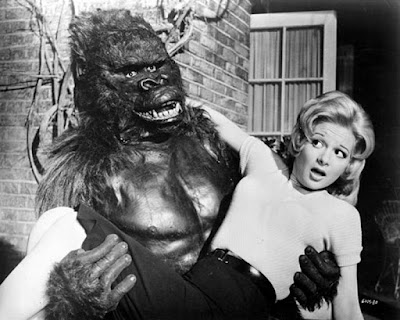THE QUATERMASS CONCLUSION (1979)
Sir John Mills is the fragile face of dystopian Britain in ITV's QUATERMASS serial, here making the cover of Time Out. Mills' performance has largely been underappreciated over the years, but as Tim Lucas points out in his Video Watchdog review (#106, April 2004), the actor is "steeped in the irony of a visionary whose ideas have been perverted and abused by the less visionary corporations he served."
NIGEL Kneale's long awaited fourth Quatermass television serial - directed by Piers Haggard - finally arrived on ITV in 1979, four years after the BBC's option had expired. Suffering from a long gestation period, and a fanfare that was quashed by a technicians strike which delayed the broadcast, QUATERMASS is doom-laden and lethargic. In a decaying near future, an elderly Professor Quatermass (a stoic John Mills, persuaded into the role by his wife) longs to be reunited with his runaway granddaughter. During a joint United States/Soviet space venture, the hardware is struck by an unearthly beam of light; it soon transpires that this ray is also striking ancestral gathering points around the globe - including stone circles and Wembley Stadium - and harvesting the Planet People, disillusioned youth of Earth who long for their misguided paradise in the stars. With the help of a radio telescope centre barely run by Joe Kapp (Simon MacCorkindale), and latterly a group of Pensioners, the rocket scientist succeeds in repelling the alien intrusion, but only at the cost of his and his granddaughter's life (thanks to a big nuclear "red button.")
Originally written in 1973, Kneale's exploration of youth alienation and the space race were relevant, but by 1979 are too distant topics to act as a successful hook. Kneale's often prophetic reading of society is limited to the Planet People being forerunners to New Age travellers, yet the writer had intended them to be proto-punks. In fact, QUATERMASS is more a wearying of life story, where youth and the elderly are warring species (and complete with internal frictions; even the usually sedate Planet People have their Kickalong (Ralph Arliss), apparently modelled on Charles Manson). The writer was usually lukewarm at best about the performers of his work, here labelling Mills as not having the authority of Quatermass, and questioned the casting of MacCorkindale as a rational and intelligent man; he also dismisses Barbara Kellerman, who play's Kapp's wife Clare, for her bouts of smiling. But Kneale himself must shoulder a great portion of the blame for a story that never permeates past its core idea.
Ashen-faced Simon MacCorkindale, Barbara Kellerman and John Mills in the TV Times listing of the second episode 'Lovely Lightning' (31st October 1979).
Haggard, who had provided a blueprint for folk horror with BLOOD ON SATAN'S CLAW, firmly places the Planet People within their spiritual, sexual landscape, but this is no longer a world for myth and legend, only one that reflects a Nazi concentration camp iconography: once harvested, ashes hang thick in the air and powdered flesh and bone seep into the earth (and to further a quasi-Third Reich agenda, in a dirty, makeshift London marketplace, books are on offer only because they can "burn well.") Unfortunately the director provides everything too flat for its own good, undermining what should have been the showpiece sequence of the Wembley stadium incarcerations, which is only memorable for Quatermass' dialogue on the sky ("the colour of vomit.")
This relentless sombre atmosphere inevitably created a muted Press reaction, describing QUATERMASS as "pedestrian," "capable humdrum" and even "mumbo-jumbo." This was particularly galling for the amount of money and extensive location filming invested in it; made on 35mm Panavision stock by the Euston Films umbrella of Thames, a lucrative £1.25m budget was made available for the four-part programme and a re-edited, 106-minute theatrical version for overseas (entitled THE QUATERMASS CONCLUSION). This truncated cut basically sliced in half the first, second and fourth episodes, with only brief sequences used from episode three, where Quatermass is saved and befriended by the underground OAPs. However, in the post-STAR WARS world there was little room for downbeat cinema science fiction, and the film version made only sporadic appearances across North American, and the intended UK dates never transpired.




